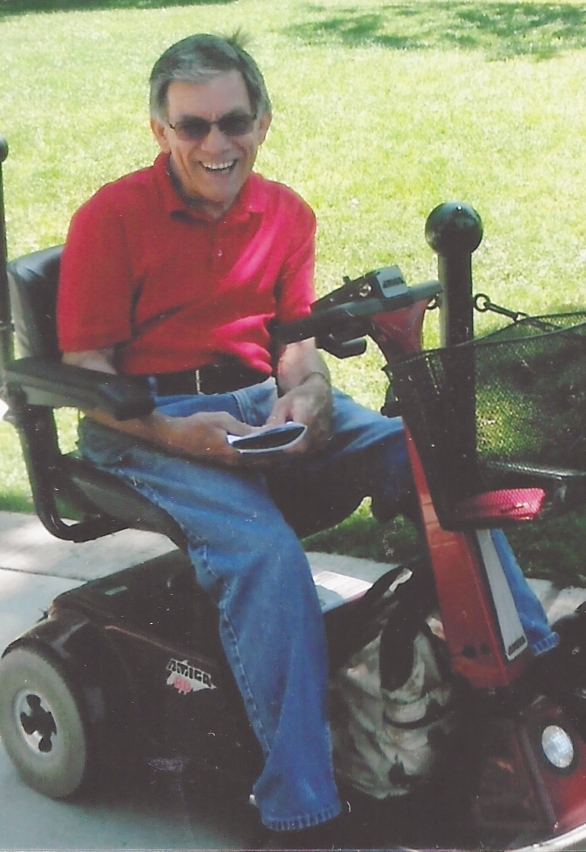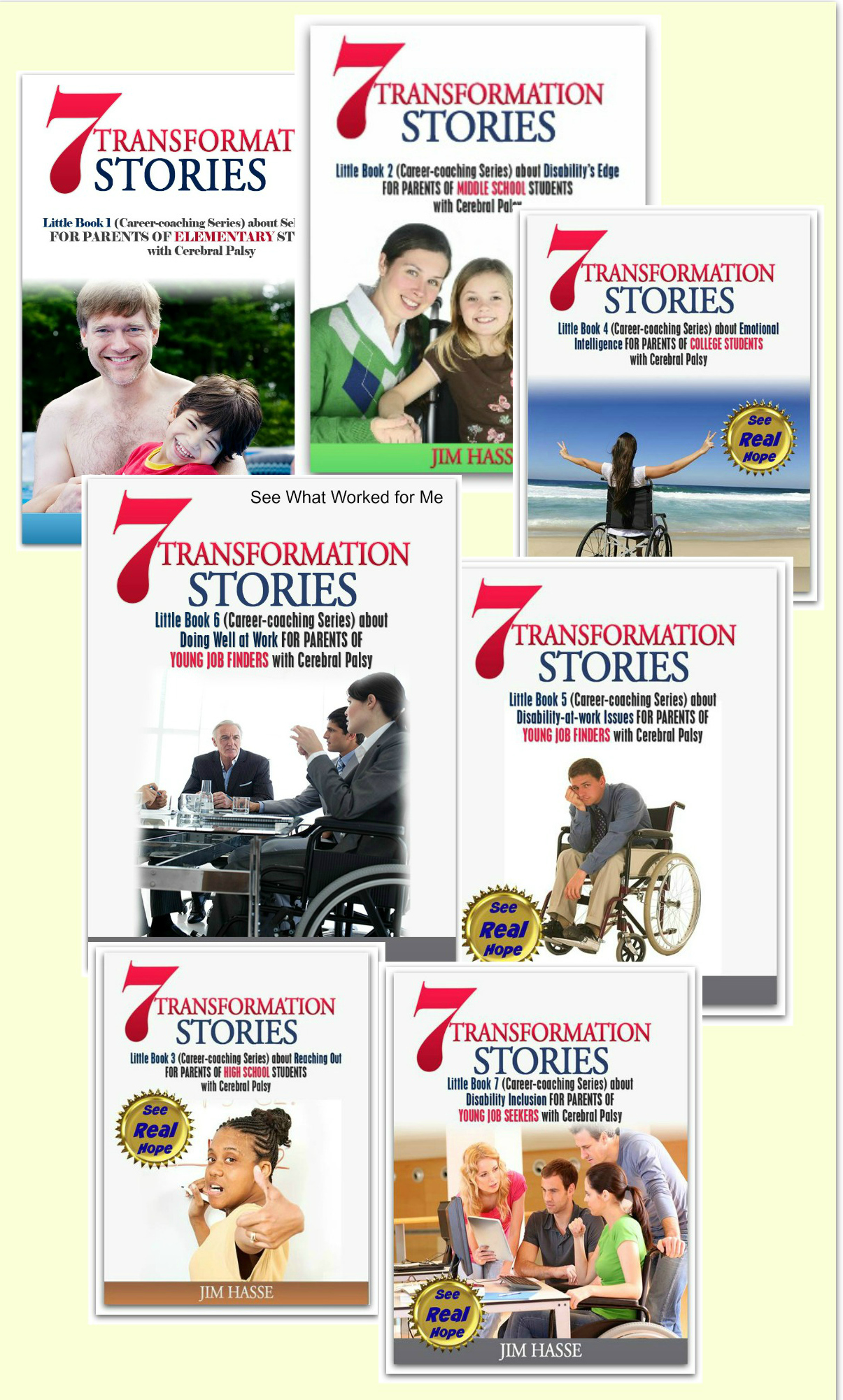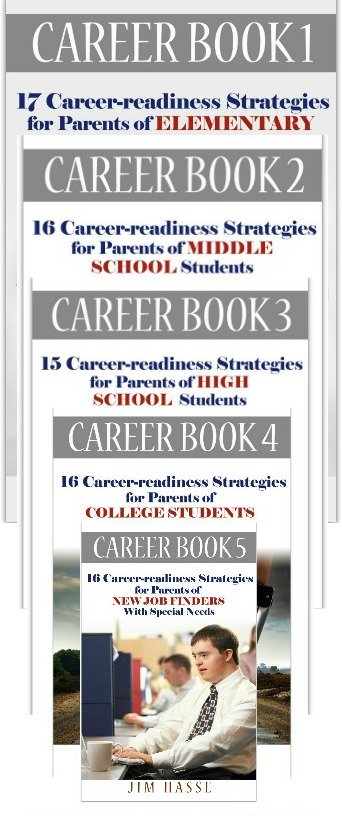Job Descriptions:
Cerebral Palsy Career Builder for High School Students
By Jim Hasse, ABC, GCDF, Disability Employment Expert
_________________________________________________________
Job descriptions – even those for burger flippers and fudge makers which typically open up during summertime for high school students -- are not cast in stone.
Hiring managers usually write them with the ideal situation in mind but, in reality, usually modify them (sometimes significantly) to accommodate individual strengths and weaknesses in the people they hire and in the work teams they manage.
That job descriptions can be (and are often) changed to reflect reality is good news for your high school student with cerebral palsy (CP). It means the job scene, even at the local pizza place, can be more accepting of differences in attributes, skills and abilities than it might first appear.
In fact, some of the best places to work as a high school student may offer a strong but quick training program of “how to do what when” -- especially if those employers add that associates should use their “own best judgment” under their understanding of the workplace mission-values-vision statements in making day-to-day decisions.
What is important are the “essential functions” of a job, not all the skills and attributes that would be preferable in a job candidate. That’s the concept that guides the American with Disabilities Act (ADA) in identifying discrimination due to disability.
As your youngster moves into the full-time workforce during the next 10 years, you’ll probably see that kind of orientation (and that type of flexibility in job descriptions) increasingly common in full-time positions.
I believe people who know how to use their own best judgment could be one of the keys to corporate innovation (and success) in the 21st Century. So, now is a good time, while youngster is in high school, to help him or her stretch (or more accurately identify) personal creativity.
The corporate world currently refers to that creativity as “innovation” or “talent” or “problem-solving” ability.
For your youngster with CP, identifying examples of his or her problem-solving ability may not be that difficult. In fact, those “solution examples” could be fodder for a couple of ongoing personal success stories.
 This is my trusty Amigo electric scooter in 2012.
This is my trusty Amigo electric scooter in 2012.My ongoing search for mobility solutions
Back in the 1950s, my physical therapist was reluctant to recommend crutches for me because she thought I would become too dependent on them and that they would prevent me from learning how to walk independently without them. I had my doubts about her reluctance.
So, I did some research and went out and bought some Canadian-style crutches myself (all before the Internet) because through high school and my first two years of college I found myself hugging the walls for stability and unable to cross streets safely without an “arm” from someone else.
At 75, I now have successfully developed a four-stage mobility strategy that works for me – all without the help of a state or private agency. I have my Fetterman forearm crutches (always in our car), my TravelScoot scooter in the trunk of our car, my Amigo scooter for getting around downtown Madison and my Invacare walker, which I use in our condo.
How I applied problem-solving experience to my job
As a company editor and photographer, I saw an opportunity during the 1970s to dramatize our company’s entry into the whey processing business through unusual camera angles.
One day (before the advent of OSHA and formal job descriptions at the company), I climbed 30 feet to a cat walk above the company’s new whey evaporator to capture a photo which emphasized the complexity of the just-finished stainless steel network.
I did it by leaving my crutches on the ground level and slowly climbing the cat walk’s stairs, using the railing and my camera’s tripod for stability.
I knew I could do it, and I captured photos I used in various publications for the following two years. But, at the time, I could see a mixture of doubt, fear and puzzlement in the faces of the processing plant workers as they watched me slowly carry out what I considered just another part of my job.
Now that I look back on that incident, I feel lucky to have worked within a company culture which was not hobbled by a spider web of internal rules and regulations. As employees, we generally understood that we were expected to use our own best judgment in performing our job tasks -- even though we were bound to make mistakes sometimes, face the consequences and maybe retrace some steps to correct a situation.
I was engaged in helping the company be the best it could be because I knew we were all engaged in serving our dairy farmer members. I felt I had autonomy in carrying out the duties of my job, and, as a result, I had a chance to develop my skills on the job.
Under that environment, I had an opportunity 20 years later to direct a company-wide communication audit during the early 1990s as the organization’s vice president of corporate communication.
My CEO had doubts about the usefulness of the audit, but he approved it and we found, through the results of audit, the steps we needed to take to improve communication at specific levels within the organization and at specific locations.
A corporate climate which fosters employee autonomy and personal growth under an umbrella of a compelling vision can be, at times, risky and sometimes messy but also rewarding. It can spawn innovation.
My employer survived 30 years of major dairy industry reorganization through
merger and consolidation, mainly, I think, because it was innovative and didn’t
follow rigid job descriptions.
What about tomorrow's business climate?
Now, in 2018, I wonder whether we’re making the most of America’s traditional “can do” approach -- the orientation that helped our troops gain victory in WW II precisely because they took it upon themselves to “get the job done.” Their tactics sometimes made more sense on the ground than plans hatched out at a higher (but not as engaged) level.
Are we training our TSA agents to use their own best judgments instead of strictly following protocol (and job descriptions) at airports so that 90-year-old ladies or paraplegics or individuals with CP don’t necessarily need pat downs or go through a scanner?
In 2018, will mortgage lenders use their own best judgment (an attribute of long-ago, local bankers who knew their communities and the people in it) to decide who qualifies for a mortgage?
Employers will likely find that kind of flexibility and ingenuity in tomorrow’s job candidates with CP, who have learned, through success and failure, how to live with ambiguity on a daily basis. Learning how to live with personal ambiguity makes working under a rigid job description unnecessary.
Your youngster with CP experiences first-hand a range of disability-related variables, some threatening and some just simply annoying but all often requiring a snap decision. He or she probably is in the habit of using creativity (and personal judgment) to deal effectively with vulnerability and ambiguity.
In tomorrow’s business climate, people who do not need to be wedded to restrictive job descriptions are the type of workers who will be in demand. They will continue to provide the extra spark for an organization’s innovation.
Return from Job Descriptions to Part-time Jobs
Go to Cerebral Palsy Career Builders
This is Creative Commons content. You can freely and legally use, share and repurpose it for non-commercial purposes only, provided you attach this sentence and the following attribution to it (including the two links):
Originally written and illustrated by Jim Hasse, ABC, GCDF, owner of Hasse Communication Counseling, LLC, who, as a person with cerebral palsy, served for 10 years as a vice president in a Fortune 500 company during his 29-year career in corporate communication. He’s an Accredited Business Communicator, certified as a Global Career Development Facilitator and author of 14 Amazon books about disability awareness and disability employment issues.





